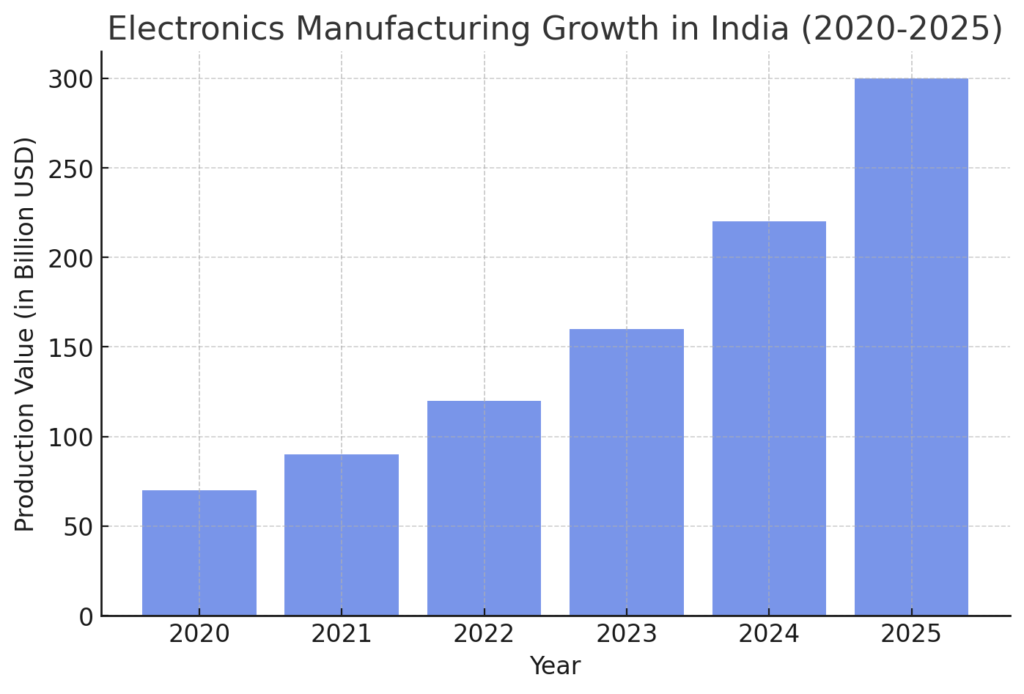PLI incentives for mobile manufacturing in India
PLI incentives for mobile manufacturing in India :India’s Electronics Manufacturing Boost: How the $2.7 Billion PLI Scheme is Reshaping the Industry
The Indian government has launched a $2.7 billion Production-Linked Incentive (PLI) scheme to strengthen the country’s electronics manufacturing sector. This initiative is expected to attract $7 billion in investments and create nearly 91,000 jobs over the next five years. With this move, India aims to become a global hub for electronics production, reducing its dependence on imports and increasing exports.
Objectives of the PLI Scheme
The primary objectives of the PLI scheme for electronics manufacturing are:
- Boost domestic production – Reduce reliance on imported components and finished electronics.
- Attract foreign investment – Encourage multinational companies to set up manufacturing units in India.
- Create jobs – Generate employment opportunities in manufacturing, research, and development.
- Increase exports – Strengthen India’s position in the global electronics supply chain.
- Promote innovation – Support the development of new technologies and encourage local startups.
By offering financial incentives to manufacturers, the government aims to make India a competitive player in the global electronics market.
Current State of Electronics Manufacturing in India
India’s electronics manufacturing industry has grown significantly over the past decade. Some key facts include:
- The sector contributes 3.4% to India’s GDP (as of 2024).
- India is the second-largest manufacturer of mobile phones after China.
- The country imports over 60% of its electronic components from countries like China, South Korea, and Taiwan.
- The electronics industry in India is projected to reach $300 billion by 2026.
Despite these advancements, India faces challenges such as dependence on foreign suppliers for semiconductors and limited high-tech manufacturing capabilities. The PLI scheme aims to address these issues.
Expected Impact on Jobs, Investment, and Global Competitiveness
The PLI scheme is expected to bring significant economic benefits, including:
Job Creation
- The initiative is projected to create 91,000 direct jobs and thousands of indirect jobs in logistics, retail, and maintenance.
- Skilled labor in sectors like semiconductor manufacturing, PCB design, and software development will see a rise in demand.
Foreign Direct Investment (FDI)
- Major global electronics brands like Apple, Samsung, and Foxconn have already expanded their operations in India.
- The scheme is expected to attract $7 billion in investments from foreign and domestic companies.
Strengthening India’s Position in the Global Market
- India aims to become a key supplier of electronics to Europe, the U.S., and Southeast Asia.
- Increased production will help India compete with China, Vietnam, and Taiwan in the electronics sector.
Challenges and Criticisms of the Policy
While the PLI scheme is promising, it also faces several challenges:
- Supply Chain Issues – India still relies on imports for semiconductors, lithium-ion batteries, and advanced chips.
- Infrastructure Limitations – Inadequate power supply, logistics issues, and high land costs may deter manufacturers.
- High Production Costs – Manufacturing costs in India are still higher than in China and Vietnam due to labor costs and taxation.
- Slow Implementation – Previous PLI schemes have faced delays in fund disbursement and execution.
Addressing these challenges will be crucial for the success of the initiative.
Comparison with Similar Incentives in China and Vietnam
India is not the only country offering incentives for electronics manufacturing. Here’s how it compares to its biggest competitors:
China
- China provides massive subsidies to companies in the electronics sector.
- It has a well-established supply chain and advanced infrastructure.
- Labor costs are rising, but China remains a global leader in semiconductor production.
Vietnam
- Vietnam offers tax incentives and low labor costs, attracting companies like Samsung and Intel.
- The country has free trade agreements that make exports easier.
- However, Vietnam lacks India’s large domestic market.
India’s PLI scheme must overcome these competitive advantages to attract global manufacturers.
Future Roadmap and Government Strategies
To ensure the success of the PLI scheme, the Indian government is focusing on:
- Developing a Semiconductor Ecosystem – Investing in local semiconductor fabrication plants.
- Improving Infrastructure – Upgrading power supply, transportation, and logistics for manufacturing hubs.
- Simplifying Regulations – Reducing bureaucratic hurdles for foreign investors.
- Encouraging Local Innovation – Providing incentives for Indian startups in electronics manufacturing.
- Expanding PLI to Other Sectors – Extending benefits to IT hardware, wearables, and electric vehicle components.
By implementing these strategies, India aims to become a major global electronics manufacturing hub by 2030.
Electronics Manufacturing Growth in India (2020-2025) – Bar Chart
- Show the growth of the electronics sector in India over the years.
- Data: Total electronics production value (in billions).

Conclusion
PLI incentives for mobile manufacturing in India :India’s $2.7 billion PLI scheme for electronics manufacturing is a bold step toward economic self-reliance and global competitiveness. While challenges remain, the initiative has the potential to create jobs, attract investments, and position India as a key player in the global electronics market. With the right policies and execution, India could soon rival China and Vietnam as a top electronics manufacturing destination.
